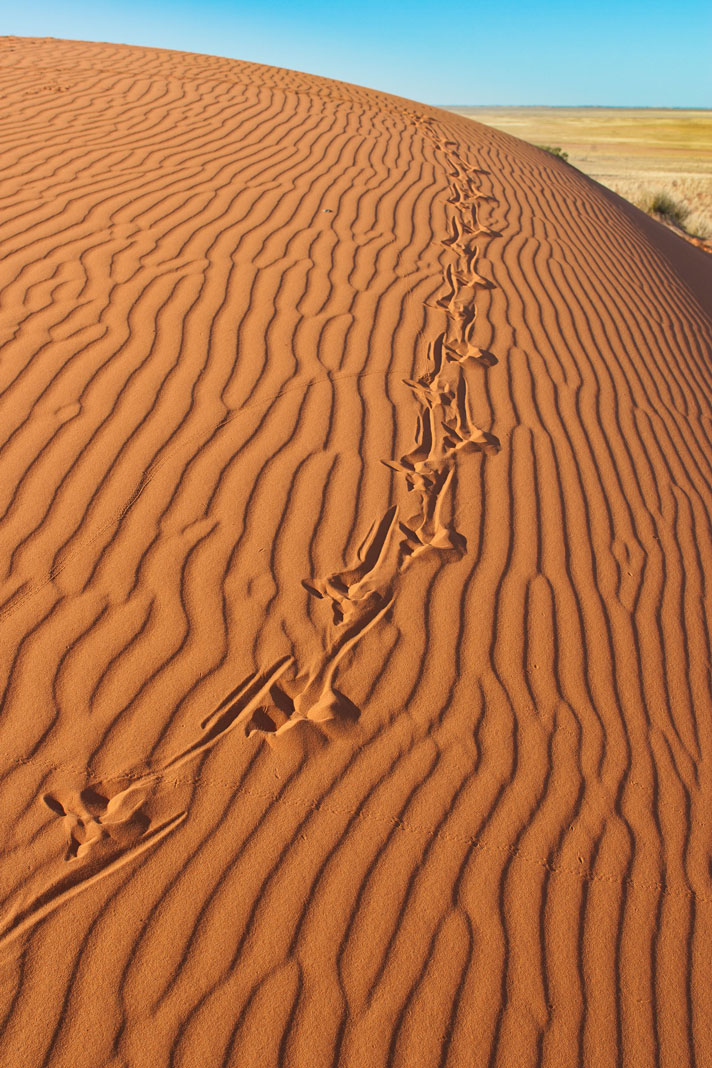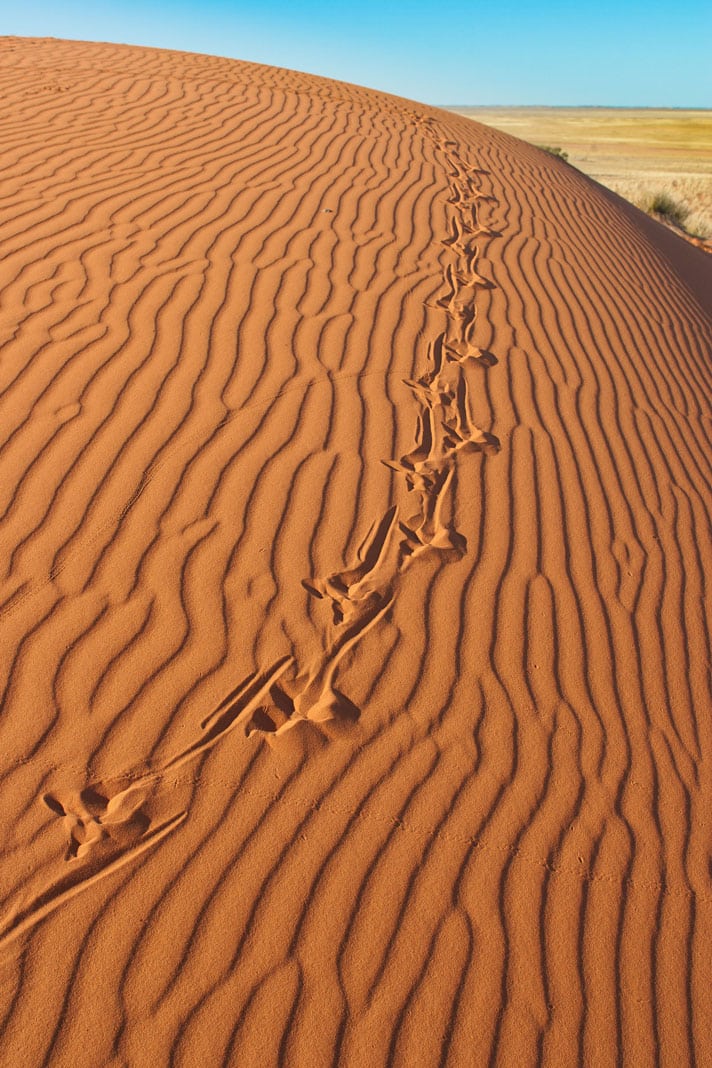Generalizations could be made based on the width of crawl tracks and the undulation pattern
Question: Is there a way to identify reptiles by their tracks? I saw a field guide for mammal tracks; is there one for reptiles?
Sylvia Nordstrom, Lake Zurich, Ill.

Janelle Lugge/shutterstock
What lizard species made these footprints?
Answer: I’ve never heard of a guide focused on that narrow subject. It would probably be impossible to key most serpent trails down with any degree of accuracy. Generalizations could be made based on the width of crawl tracks and the undulation pattern. Heavy snakes, such as most rattlesnakes, leave a linear path because they move with the classic “caterpillar” or rectilinear motion by using their belly scutes to propel them forward in a series of ripples.
Research Says Some Lizards Ran On Hind Legs 110 Million Years Ago
Faster, more slender species usually tend to use a concertina-like motion, using anchor points to push their bodies ahead. This works by alternating thrusts off rocks and branches, and sometimes just by pushing into soft sand to form a place to shove off.


